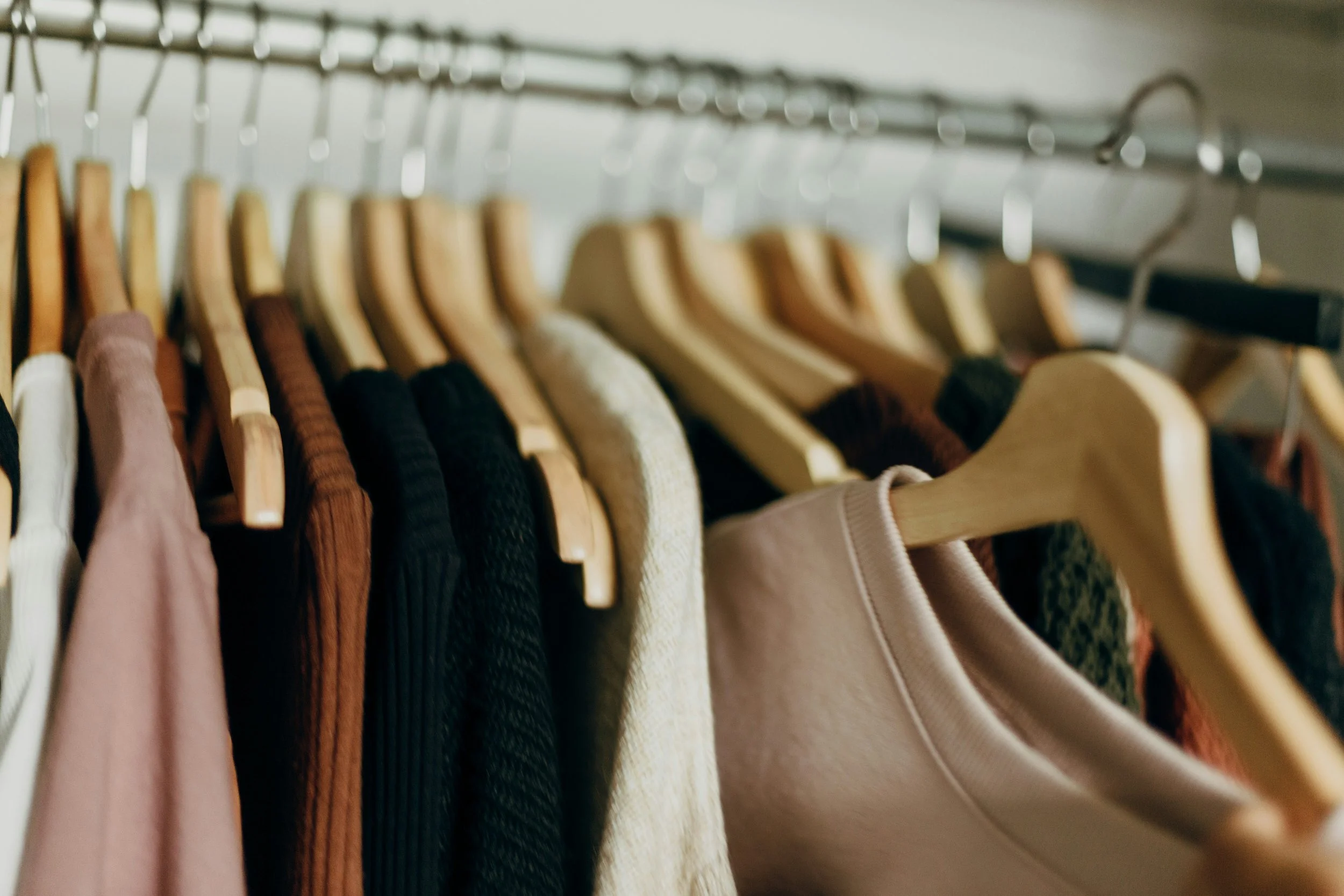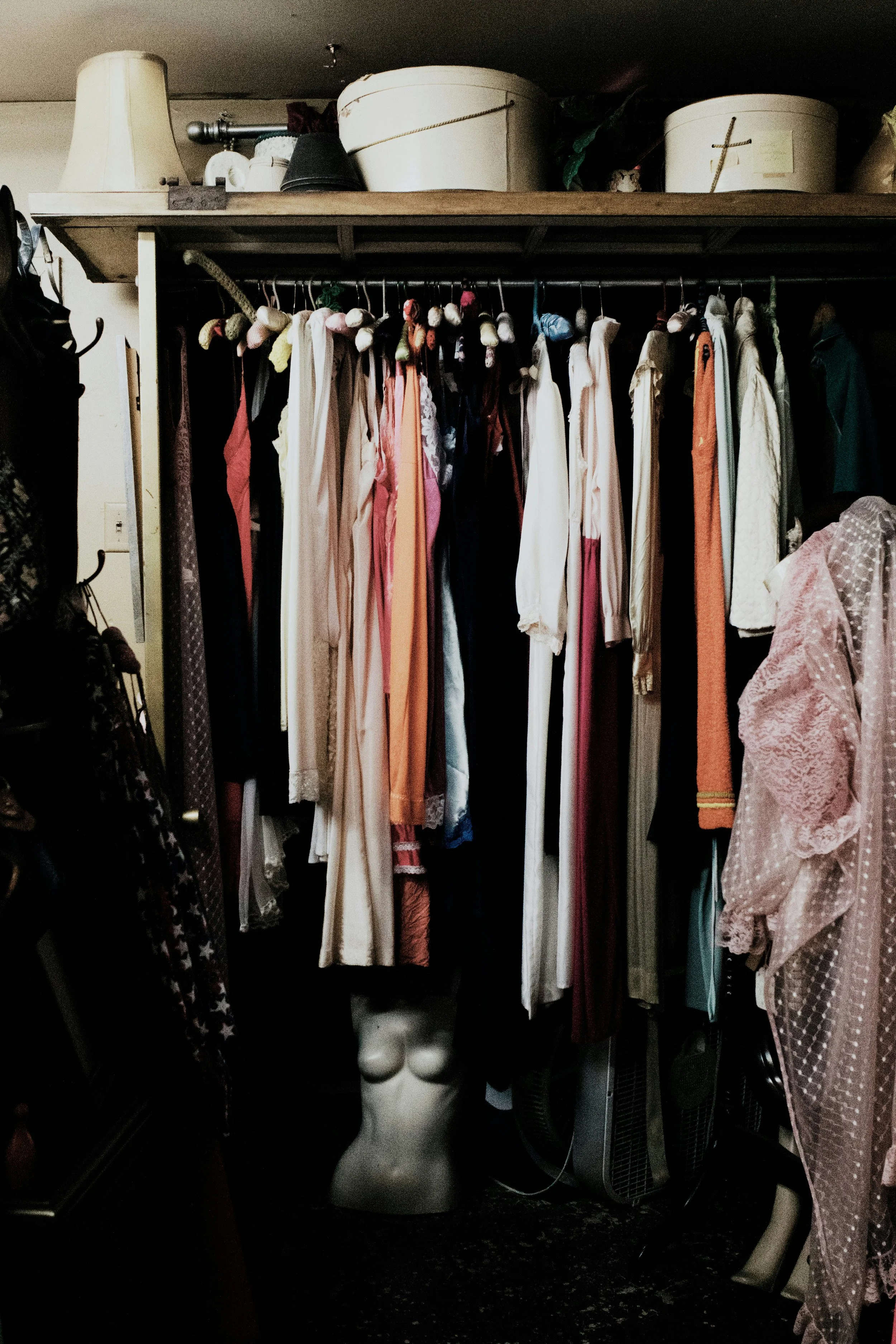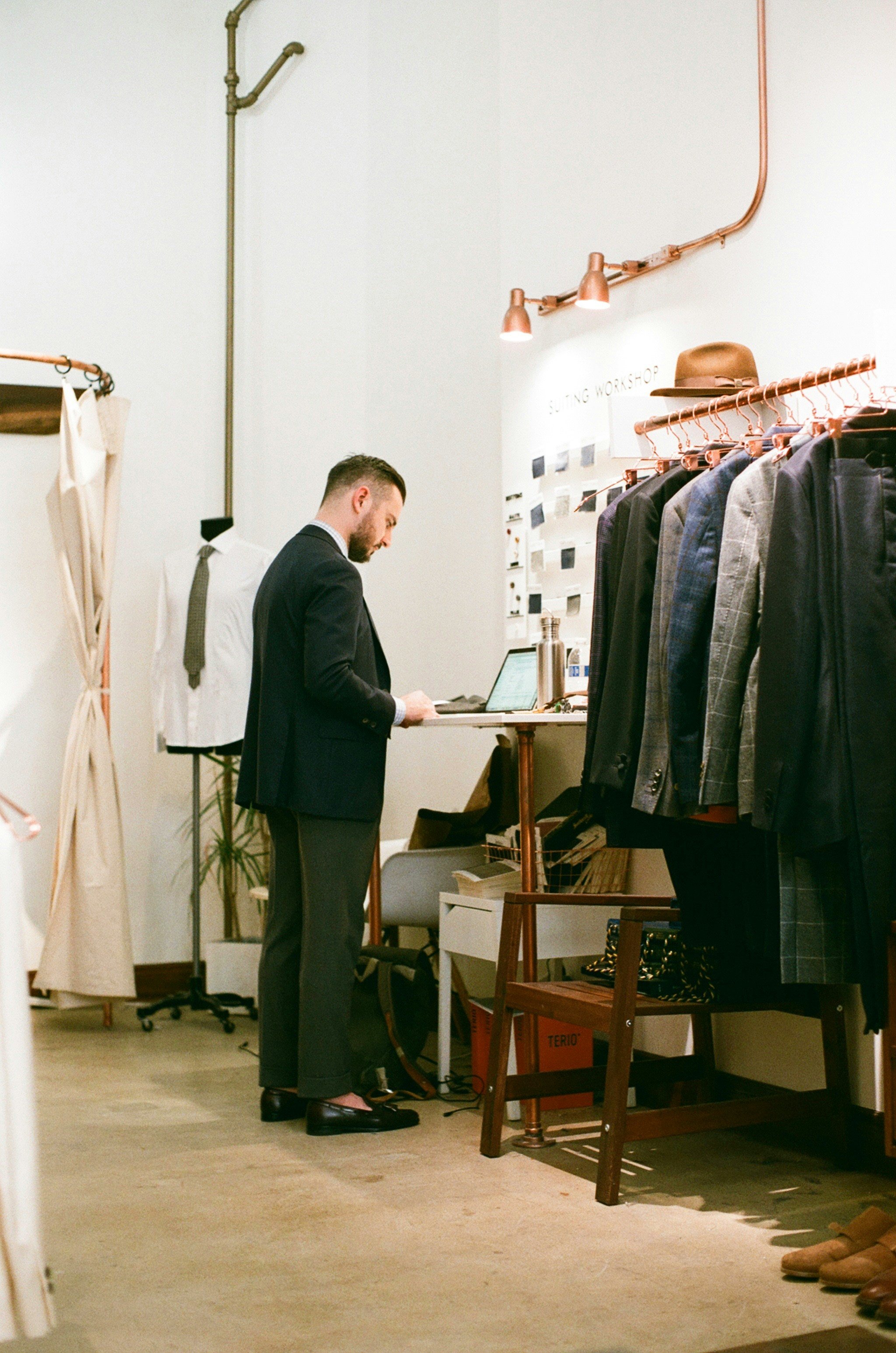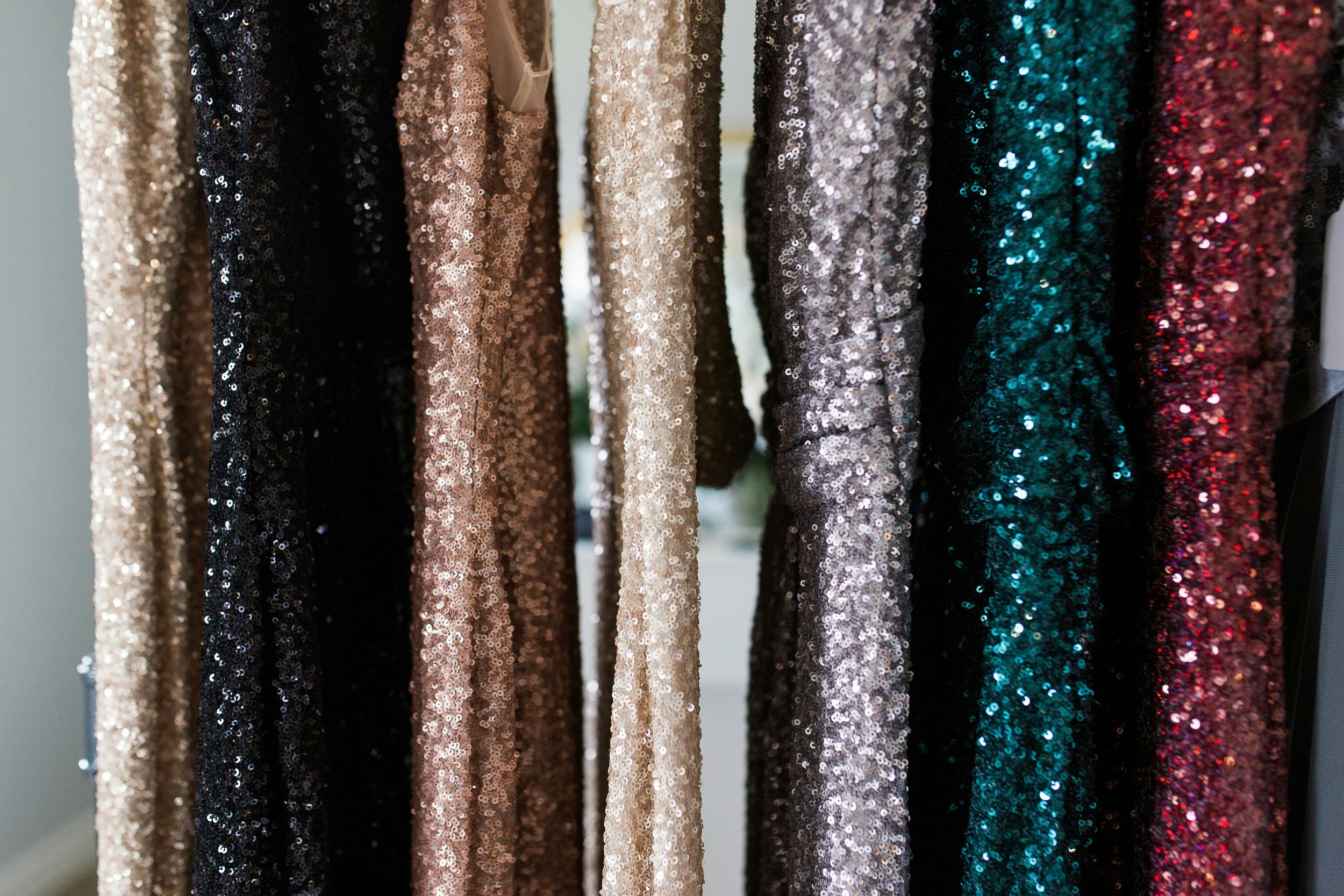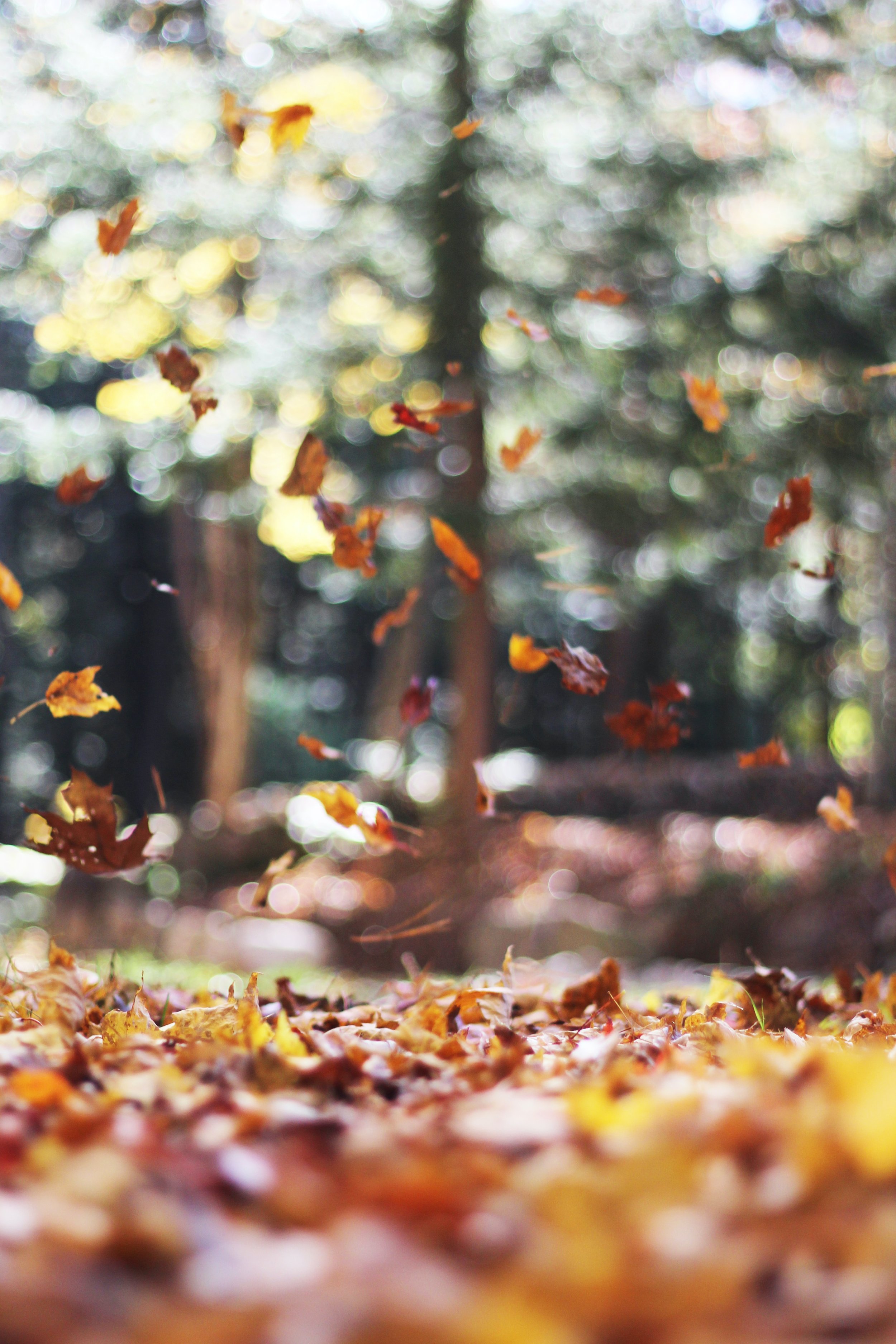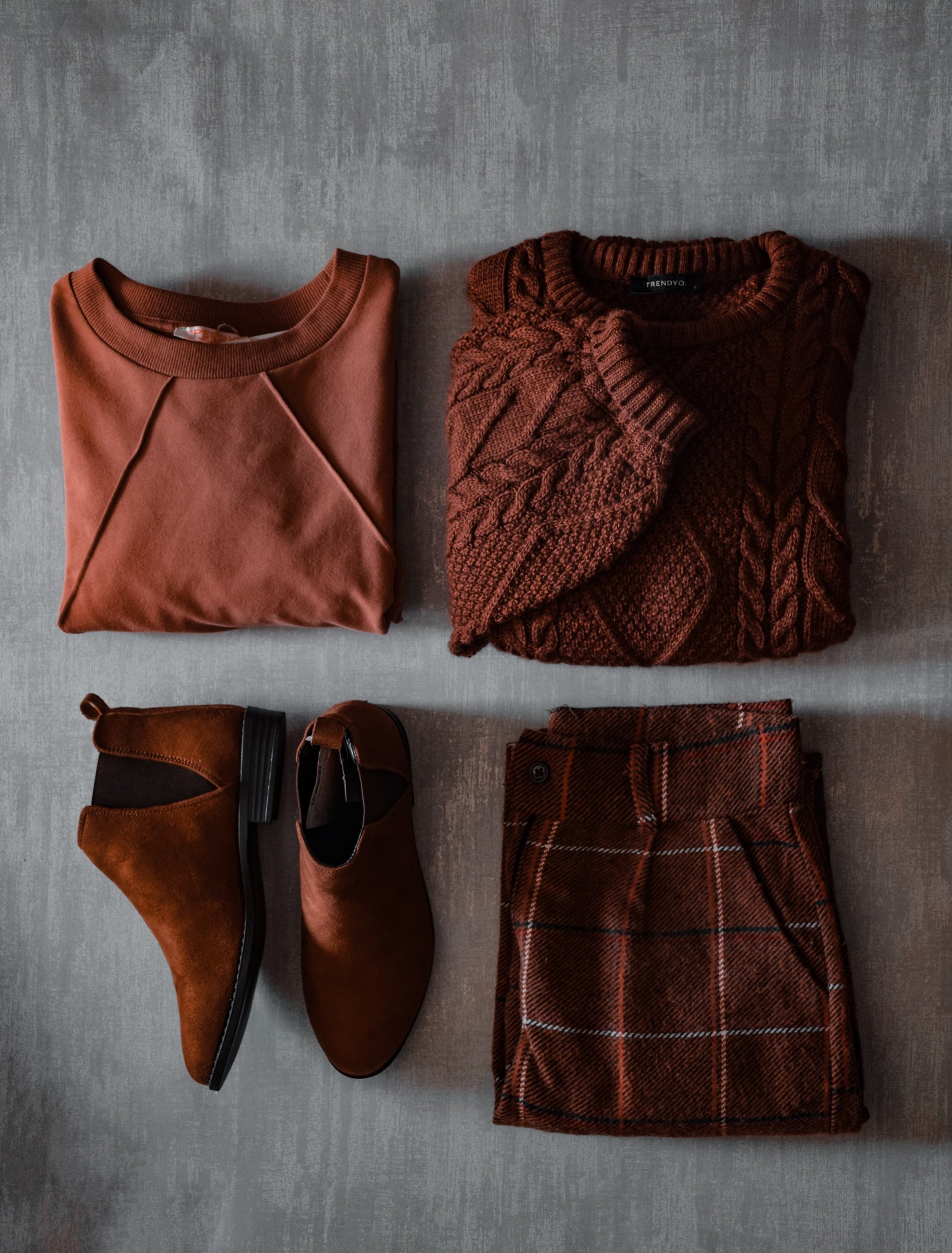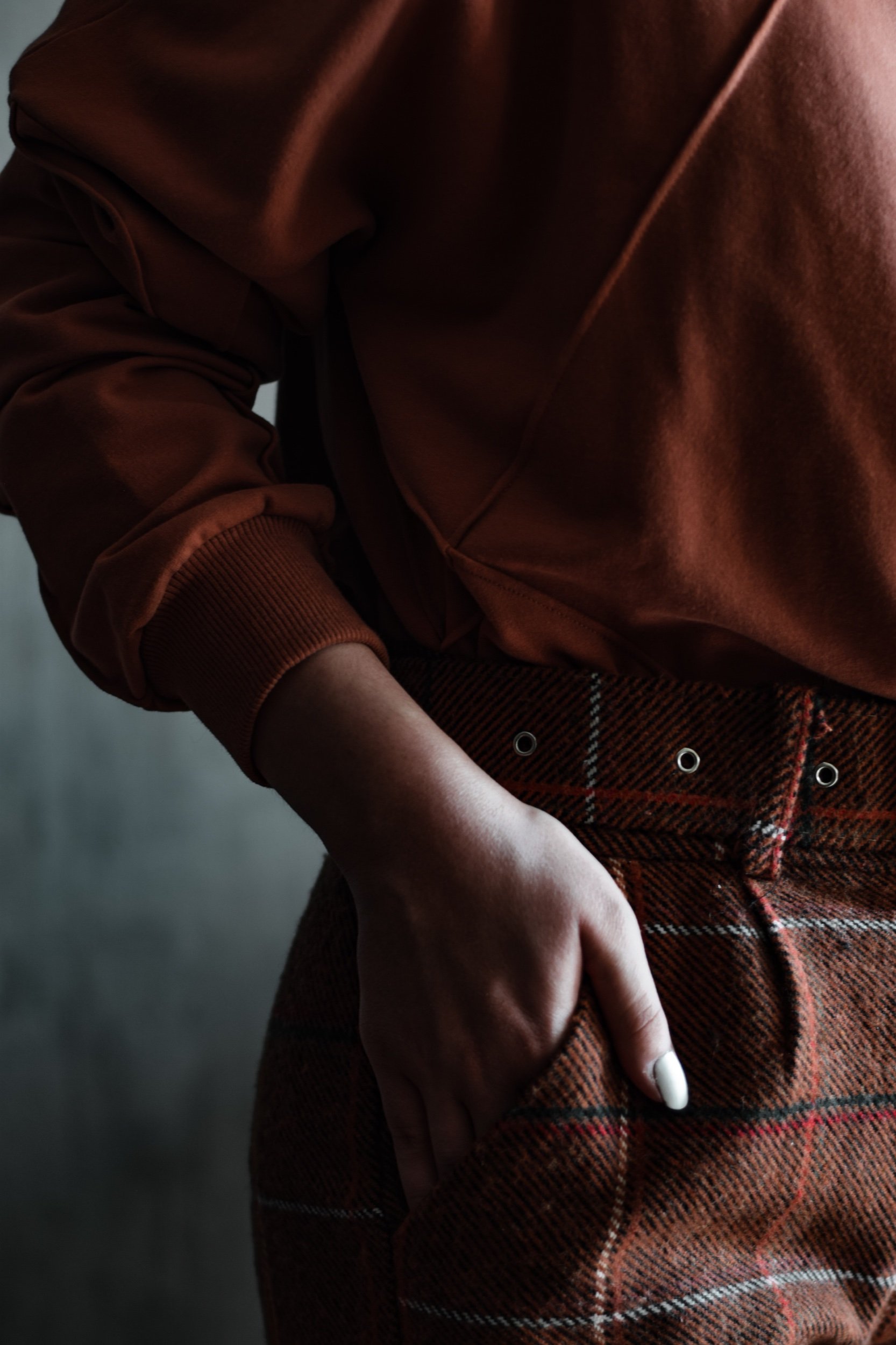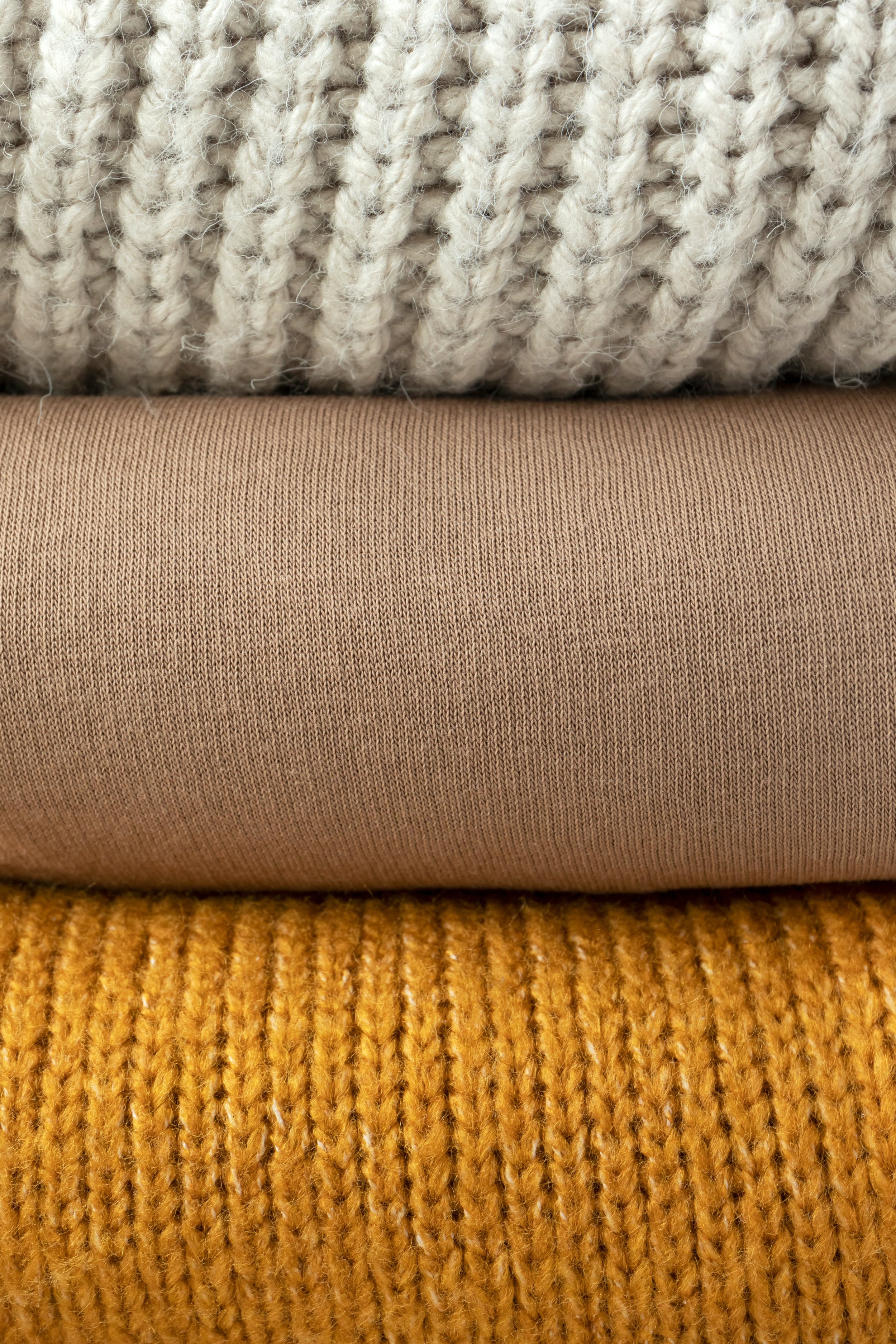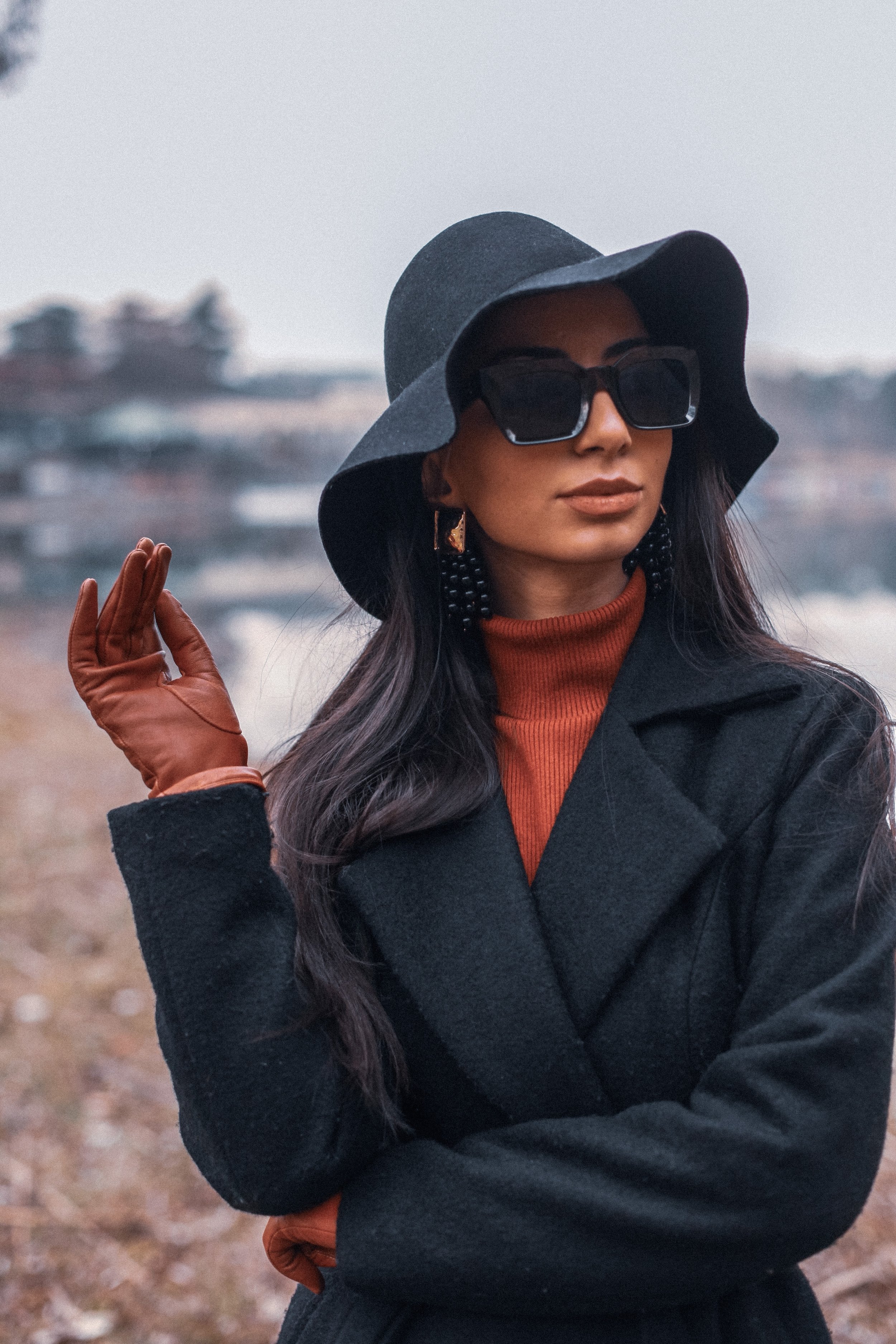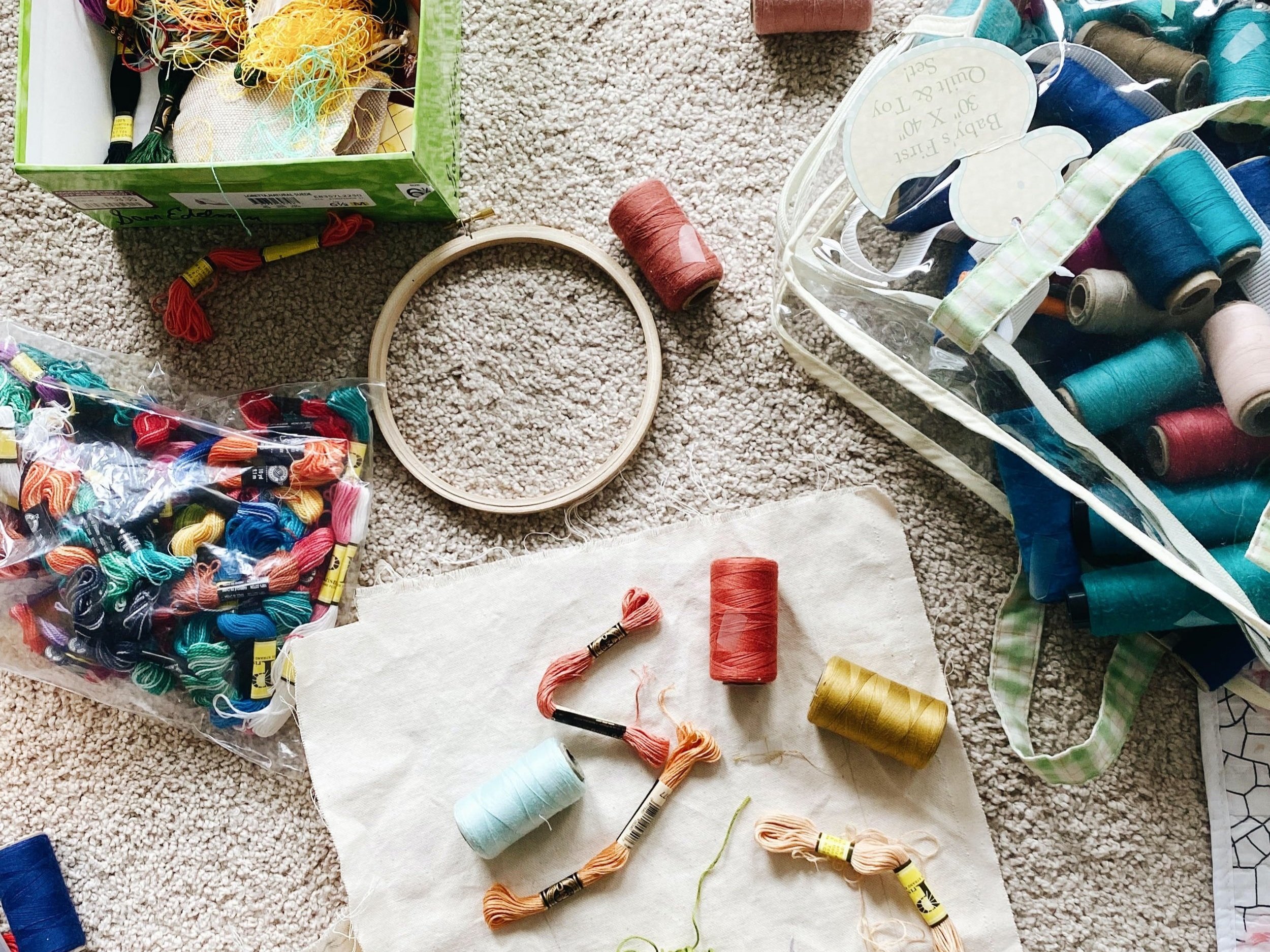How to Clothes Shop Sustainably on a Budget
Genuinely sustainable clothing can be expensive but a small clothing budget doesn’t mean that you can’t be planet-friendly.
Better still, shopping for low cost sustainable outfits can be a lot of fun. Our How to Guide shows you how.
Photo by Hong Nguyen on Unsplash
1. Buy nothing. The cheapest (and most extreme) approach! It might seem out of reach, but a quick social media search will soon locate others who are on the same path and have tips and encouragement to share.
Photo by Andrej Lišakov on Unsplash
◦ Check out what you have in your wardrobe and consider whether you really need anything else.
Photo by Priscilla Du Preez 🇨🇦 on Unsplash
◦ Where there are gaps, ask friends to raid their own wardrobes or wait until your birthday/ Christmas.
Photo by Niko Tsviliov on Unsplash
◦ If you need support, take a social media “buy nothing new” challenge.
Photo by Adithya Reza on Unsplash
2. Get the sales dates in your calendar. Many sustainable brands run sales and offers where you can pick up good deals on high quality clothing.
Photo by Maddi Bazzocco on Unsplash
◦ Try to plan your shopping in advance so that you can be sure to catch the sales early when you’ll have the best choice.
◦ Regularly check to see what needs replacing so that you can get a head of the game and avoid paying full price.
◦ January sales – from 1st, throughout January
◦ Spring clearance sales fall in late March to early May
◦ Easter sales start 2-3 weeks before Easter (mid-March 2026)
◦ Summer sales usually start in mid-June and peak around the beginning of July.
◦ Winter sales start on Black Friday (end of November) and then ramp up on Boxing Day
Photo by Arno Senoner on Unsplash
1. Make the most of Christmas and Birthdays. If you have the option, consider asking for higher price sustainable items like boots, shoes and coats, for your birthday or Christmas. People will often be thankful for gift ideas and you can ask for money from different people to make up the cost of a more expensive item.
Photo by Emily Pottiger on Unsplash
2. Shop Thrift/Charity Shops: It’s an obvious one but that’s because it’s such a good choice! Exploring local thrift stores and charity shops for second-hand clothing can lead you to unique pieces at a fraction of the original price while supporting charitable causes.
Photo by Adrienne Leonard on Unsplash
3. Online Resale Platforms: If you haven’t tried online platforms like Depop and Vinted, you are missing out! These peer to peer outlets are fantastic for picking up a bargain and for selling unwanted items. It feels good to save money and save clothing from land-fill
Photo by appshunter.io on Unsplash
4. Clothing Swaps: Organise or participate in clothing swap events with friends or community groups. It's a fun way to refresh your wardrobe without spending much money. Check out our blog on how to run a swap.
Photo by Toshi Kuji on Unsplash
5. Capsule Wardrobe: Another classic, the capsule wardrobe is your sustainable, minimalistic, reliable friend. Invest in a few high-quality, versatile pieces that can be mixed and matched. This approach reduces the need for frequent purchases and helps you create a sustainable wardrobe.
Photo by Priscilla Du Preez 🇨🇦 on Unsplash
6. DIY and Upcycling: Get creative by upcycling old clothes or making simple alterations to breathe new life into your wardrobe.
7. Renting Clothes: Consider renting outfits for special occasions instead of buying new ones. This is a sustainable option that allows you to wear something new without the commitment.
Photo by Klara Kulikova on Unsplash
8. Educate Yourself: Learn about sustainable fabrics and practices. This knowledge will help you make informed choices when shopping, even on a budget.
Photo by Maite Oñate on Unsplash
9. Prioritise Quality Over Quantity: It may take a bit more planning but focusing on buying fewer, high-quality items that will last longer is much cheaper in the long run.
Photo by Tanya Barrow on Unsplash
These tips can help you shop smarter and stick to your budget while being eco-friendly. We’d love to hear about your experiences!
How to Host a Clothes Swap
A clothes swap is a great way to promote sustainability, have fun and refresh your wardrobe on a budget. Whether you're looking to raise money for charity, shake up your style or just declutter, it’s an event that is easy to organise and fun to do.
Here’s how to host a successful clothes swap:
Step 1: Plan Your Event
1. Choose the Date and Location:
◦ Pick a day and time that works for most people. Weekend afternoons are usually good for a relaxed vibe.
◦ Consider a public space like a community hall or a friend's home. Ensure there’s enough room for people to sort through the clothes comfortably.
◦ Set a maximum number of attendees. Think about the space you have available and how many people you can comfortably accommodate.
3. Set the Guidelines:
◦ Decide on the swap format: will it be one-to-one, where you exchange one item for one item (you can use tickets to help with this), or will you create a “free-for-all” system?
◦ Create a list of acceptable items and set a maximum number of items to avoid overwhelming the swap with too many clothes
Photo by Alejo Reinoso on Unsplash
◦ It's really important to let people know that only clean, gently used items are welcome, to keep the event enjoyable for all.
4. Unless your event is very small, rope in a few volunteers to help you set up and organise clothing/ give out tickets.
Photo by Zaven Baghdasaryan on Unsplash
Step 2: Promote Your Swap
1. Reach out to friends, family, co-workers, or neighbours via social media or group chats. Include all the important event details and info about the types of items that are suitable.
2. If your space limits you to a small number, try to ensure that there are at least a couple of people around the same size so that everyone has swapping options
Photo by Toshi Kuji on Unsplash
Step 3: Set Up the Event
1. Create a sorting station where you can sort things into categories like dresses, tops, shoes, and then put them in designated areas, arranged by size if possible. Size labels can make it a lot easier for people to find what they’re looking for.
2. Prepare display areas where you can lay out the clothes neatly on tables, drying racks, step ladders or even blankets on the floor.
Photo by Abram Jacob on Unsplash
3. Organise the clothing by item category and size for ease of browsing.
4. If space allows, set up a changing room or private corner for people to try things on. This helps people decide if an item is a good fit before they take it home.
5. Ensure you have a couple of mirrors available including at least one full-length.
Photo by ANHELINA OSAULENKO on Unsplash
6. Set up a box for charity donations. if you're raising money through your Swap, make sure people know where to donate. If you don't know all the attendees, allocate a volunteer to look after the box.
Photo by Jamaal Cooks on Unsplash
Step 4: Let the Swapping Begin!
1. Start with a casual introduction. Once everyone has arrived, briefly explain how the swap works and any rules you’ve set. For example, everyone should only take as many items as they’ve brought.
2. Once the swap officially begins, everyone can start looking through the items, try them on, and take what they like.
3. After the swap, you can donate leftover clothes to local charities or thrift stores to ensure the items go to a good home.
Step 5: Wrap It Up
1. Make sure to thank everyone for participating. If people had fun and enjoyed the experience, they’re more likely to come back for future swaps.
2. If the event goes well, you could make it a regular thing! Consider hosting seasonal swaps, themed events, or even virtual swaps.
Photo by Andrej Lišakov on Unsplash
Extra Tips for Success
• Providing snacks and drinks can make the event feel more like a social gathering and add to the enjoyment
• Create a fun playlist to keep the energy up during the swap. You can even add activities like a “fashion show” where everyone showcases their finds.
• Set a time limit. People tend to stay longer than expected, so setting an end time ensures the event doesn’t drag on too long.
Photo by Kelsey Chance on Unsplash
A clothes swap is a simple yet impactful way to be more sustainable, save money, and have a good time while refreshing your wardrobe. By hosting one, you’ll not only reduce the environmental footprint of your fashion choices, but you'll also foster a sense of community and creativity. Plus, it's a wonderful way to breathe new life into items that no longer fit your style or needs!
Happy swapping!
Photo by Artificial Photography on Unsplash
How to dress Sustainably – for Men
While women’s fashion often dominates discussions around sustainability in the industry, men’s fashion can also have a huge environmental footprint.
Fortunately, there are simple ways men can dress more sustainably—without sacrificing style. Here’s your guide to building an eco-friendly wardrobe.
Photo by Aniket Narula on Unsplash
Shop Slow
Take a mindful approach to shopping:
• Quality over quantity: Instead of buying many cheaper items, invest in fewer, higher-quality pieces that are built to last.
Photo by Matthew Moloney on Unsplash
• Consider the garment’s lifespan: Do you truly need the item? Will fit into your wardrobe for years to come? How easy it will be to care for it?
• Repurpose and repair: Think about how you can repair old clothes rather than throwing them away, extending their life and reducing waste.
Photo by Nimble Made on Unsplash
Choose Long-Lasting and Timeless Styles
Opting for well-made classic pieces that will last several seasons and can be worn in multiple ways, reduces the need for constant replacement – and keeps life simpler.
Photo by Tobias van Schneider on Unsplash
Shop Sustainable Brands
Choosing truly sustainable brands is a sure way to be green. ZARAMIA AVA has a range of timelessly stylish menswear. From tailored jackets and statement trousers to t-shirts, we only use the most eco-friendly materials and methods.
Here are a few other sustainable menswear brands that are available in the UK:
1. Patagonia
• Patagonia uses sustainable materials like organic cotton, recycled polyester, and wool. They also offer repair services to extend the life of garments.
Photo by Keagan Henman on Unsplash
2. Nudie Jeans
• Nudie Jeans focuses on using organic cotton for their denim. They offer free repairs on all jeans and offer a trade-in service.
Photo by Sven Ciupka on Unsplash
3. Thought Clothing
• Thought make socks that “look after your feet and the planet”. Their range includes plain offerings as well as nature, hobbies and animal-themed designs.
• https://thoughtsocks.com/collections/sustainable-socks-mens
Photo by JULIAN ALEXANDER on Unsplash
4. Allbirds
• Allbirds offers trainers and casual shoes made using natural materials like merino wool, eucalyptus tree fibre, and sugarcane.
• https://www.allbirds.co.uk/collections/mens
5. Rapanui
• UK-based Rapanui uses organic cotton, recycled fabrics, and renewable energy in its production of stylish and eco-conscious casual menswear.
6. Finisterre
• Finisterre offers high-performance outdoor clothing made with recycled fabrics, organic cotton, and merino wool. They offer a recycling service.
Photo by Vlad Braga on Unsplash
7. Community Clothing
• British company Community Clothing makes a wide range of clothing and accessories to high standards in the UK, using high quality sustainable fabrics.
Photo by Clem Onojeghuo on Unsplash
◦ Global Organic Textile Standard (GOTS) – certifies organic textiles and ensures they are produced in an environmentally and socially responsible manner.
Photo by Zahir Namane on Unsplash
Opt for Second-Hand and Vintage Clothing
High street charity shops and vintage stores are a great source of green options. Buying second-hand reduces waste, lowers the demand for new manufacturing, and often results in a unique and more affordable wardrobe. Depop, eBay and Vinted are excellent online options.
Photo by Quaid Lagan on Unsplash
Visit Eco-Conscious Pop-Up Shops or Markets
Some high street areas in larger cities host eco-conscious pop-up shops or sustainable fashion markets, where local designers and brands showcase ethical clothing. These temporary events provide a great opportunity to shop for greener clothing while supporting independent brands.
Photo by Clark Street Mercantile on Unsplash
Shop for greener clothing in high street shops
Many high street shops now stock more sustainable collections or individual items. If you choose to shop with high street stores, you can use these tips to help you select sustainable options:
Photo by Yasamine June on Unsplash
1. Look for Sustainability Labels and Certifications
• Fair Trade – indicates that workers are paid fairly and work in safe conditions.
• OEKO-TEX Standard 100 – ensures the fabric has been tested for harmful substances.
• B Corp – indicates the company meets high social and environmental performance standards.
• Recycled or Upcycled Materials – some brands label their products with information about the percentage of recycled materials used.
2. Check for Eco-Friendly Fabrics
• When shopping, check labels or product descriptions for materials such as:
• Organic cotton – grown without synthetic pesticides or fertilizers.
• Hemp – requires little water and no pesticides.
• Bamboo – a fast-growing, renewable resource that can be used for fabrics, though ensure it’s processed sustainably.
• Recycled fabrics – polyester or nylon made from recycled bottles or other waste materials (e.g., Repreve).
• Tencel/Lyocell – a fibre made from sustainably sourced wood pulp, processed in a closed-loop system with minimal waste.
• Vegan leather like Piñatex, cork and apple leather (Appleskin) and mushroom leather (Muskin)
• Avoid synthetic fabrics like polyester, as they are petroleum-based and do not biodegrade.
3. Check for Ethical Labor Practices
Some high street brands now include information about the conditions in which their clothes are produced. Look for stores that are transparent about their supply chains and the ethical treatment of workers. Brands with certifications like Fair Trade or Social Accountability 8000 (SA8000) often go the extra mile to ensure workers are paid fairly and work in safe conditions.
Photo by Mahdi Bafande on Unsplash
There are more options than ever for sustainable menswear shopping. Whether you choose to support independent sustainable labels, buy locally-produced clothing, shop secondhand or choose carefully from high street collections, it is easy to find green garments when you know what to look for.
Photo by Clem Onojeghuo on Unsplash
How to Create a Sustainable Festive Capsule Wardrobe
Party season is here and it can be easy to get tempted by shiny fast-fashion solutions to the question “what shall I wear?” At the other end of the spectrum, it can be frustrating to wear the same outfits over and over.
Photo by Khaled Ghareeb on Unsplash
But with a little time, a wardrobe audit and a few sustainable additions, you can easily pull together the clothing you need to help you look good and feel good on every occasion.
Photo by Adriano Gonçalves on Unsplash
Our How to Guide walks you through the process of curating a mini-capsule wardrobe and suggests some garments to include. Check out our other guides for more info on each step.
Photo by Khaled Ghareeb on Unsplash
1. Shop Your Wardrobe
Before shopping, check what you already own. Rediscover hidden gems, reimagine outfits, or revive past favourites with a fresh twist using accessories or layering
Photo by Adrienne Leonard on Unsplash
2. Borrow or Swap
Consider borrowing outfits from friends or family. Hosting a clothes swap party is a fun way to refresh your wardrobe while keeping it budget- and eco-friendly.
Photo by Marcus Loke on Unsplash
3. Rent for the Occasion
For statement pieces or one-off events, renting is a sustainable option. UK-based online platforms like Hurr, By Rotation, and My Wardrobe HQ offer stunning festive options without the commitment.
Photo by Caitlyn Wilson on Unsplash
4. Shop Second-hand
Visit charity shops, vintage boutiques, or online platforms like Depop, Vinted, or Oxfam Online. You’ll find unique, affordable pieces that reduce fashion waste.
Leeds City Centre shop Tråd Collective sells a fabulous range of second-hand and up-cycled clothing and accessories – as well as sustainable brands like ours!
Photo by Yunming Wang on Unsplash
5. Invest in Timeless Pieces
If buying new, choose versatile items made from sustainable materials. Look for brands with ethical practices like ZARAMIA AVA, People Tree, Thought Clothing, or Reformation. Prioritise quality over quantity.
Photo by Andrey Zvyagintsev on Unsplash
6. Accessorise Creatively
Transform simple outfits with bold accessories. Use jewellery, belts, or scarves to refresh your look. Supporting local artisans or small businesses adds an extra layer of sustainability.
7. DIY and Upcycle
Get crafty by customising older outfits. Add embellishments, tailor for a better fit, or combine pieces for something entirely new.
Photo by J Williams on Unsplash
8. Think Footwear and Bags
Opt for versatile shoes and bags that pair with multiple outfits. Secondhand shops or sustainable brands like Will’s Vegan Store, Vivaia or Bhava studio are great for finding ethical options.
Photo by Moreno Matković on Unsplash
9. Avoid Fast Fashion Trends
Stay true to your personal style. Trend-led purchases are often low-quality and wasteful. Instead, focus on timeless elegance or vintage charm.
Photo by Sanira Askerbekova on Unsplash
Here’s one take on the festive capsule wardrobe to get you started.
Check what you have in your wardrobe, substitute similar items and consider buying a few pieces from sustainable brands.
Photo by Yemi Wallington on Unsplash
1. The Little (Black) Dress
A classic LBD is endlessly versatile but why not break out and choose another neutral colour that you love. Opt for a style with clean lines, such as an A-line or wrap dress, made from sustainable materials like organic cotton, Tencel, or recycled polyester. Dress it up with statement accessories for formal events or layer it with a jumper for casual gatherings.
Photo by Anastasiya Badun on Unsplash
2. Stylish Trousers
Invest in high-quality trousers in a neutral tone like black, navy, or dark green. These can be paired with festive tops, cosy knits, or a jacket for an elegant yet comfortable look. Look for brands using deadstock or recycled fabrics.
Photo by Diego Nagem on Unsplash
3. Festive Top
Whether you like to make a statement with sequins or prefer something a little more subtle, a festive top can add sparkle to your capsule wardrobe. Choose an ethically made option in gold, silver, or jewel tones that complements your trousers or skirts. Rewear it with different bottoms to create unique looks.
Photo by hanen souhail on Unsplash
4. Midi Skirt
A flowing midi skirt in a luxe fabric like velvet, satin, or recycled polyester adds a touch of glamour. Opt for a neutral shade (black, champagne, or burgundy) or a bold print to make a statement. Pair it with a knit jumper for daytime or a sequined top for evening events.
5. Statement Outerwear
A bold coat or jacket is essential for staying warm and stylish. Choose a longline coat or a faux-fur cropped jacket made from recycled materials. A piece in a festive colour like deep red or forest green can double as a statement item.
Photo by oo verthing on Unsplash
6. Versatile Knitwear
A soft, neutral knit jumper in cream or grey is perfect for layering. Look for sustainable options made from organic cotton or recycled yarns or go second-hand. Layer it over dresses or pair it with trousers for casual gatherings.
7. Sustainable Shoes
• Block-Heel Ankle Boots: Great for outdoor events or when you’re on your feet for hours.
• Elegant Flats or Heels: A metallic or velvet pair can add a festive touch to any outfit.
• Sustainable Trainers: Perfect for casual parties or travel days. Brands like Veja or Allbirds offer stylish and eco-friendly options.
Photo by Klara Kulikova on Unsplash
8. Accessories
• Statement Jewellery: A pair of bold earrings or a chunky necklace can transform any outfit. Support local artisans or look for vintage pieces to keep it sustainable.
Photo by Oladimeji Odunsi on Unsplash
• Festive Clutch Bag: Opt for a recycled or upcycled design, or choose a versatile bag in metallic tones.
Photo by ONNE Beauty on Unsplash
• Belts: A chic belt can cinch a dress or add flair to your trousers or skirts.
Photo by Social Envy on Unsplash
Outfit Ideas with This Capsule:
1. LBD + Statement Jewellery + Heels: Classic evening look.
2. Midi Skirt + Knit Jumper + Ankle Boots: Cosy yet chic for a daytime event.
3. Stylish Trousers + Festive Top + Block-Heel Boots: Sophisticated yet comfortable.
4. Knit Jumper + Midi Skirt + Statement Earrings: Casual with a festive touch.
Photo by Andrey Zvyagintsev on Unsplash
How to Dress for Autumn
As the leaves turn shades of crimson and gold, and the air carries a hint of crispness, it's time to say goodbye to summer attire and welcome the cozy embrace of autumn fashion. Dressing for this transitional season requires a blend of style and practicality. In this blog post, we'll guide you on how to dress for autumn, offering tips and outfit ideas to help you make the most of this beautiful season whilst making sustainable choices.
Image from Unsplash
Layering is Key:
Autumn weather can be unpredictable, so mastering the art of layering is essential. Start with a lightweight, long-sleeved base layer, add a versatile cardigan or sweater, and top it off with a stylish jacket or coat. This way, you can adapt to changing temperatures throughout the day.
Image from Unsplash
Choose Earthy Tones:
Image from unsplash
Embrace the colours of autumn by incorporating earthy tones into your wardrobe. Think warm shades like deep greens, rich browns, burnt oranges, and classic neutrals. These hues not only complement the season but also exude a cozy, autumnal vibe.
Image from Unsplash
Don't Forget About Denim:
A good pair of jeans is a timeless autumn staple. Opt for classic denim in various cuts and washes to create versatile outfits. Pair them with cozy sweaters or dress them up with a tailored blazer for a polished yet comfortable look.
Image from unsplash
Boots for Every Occasion:
Autumn is synonymous with boots. From ankle boots to knee-highs, there's a style for every occasion. Consider investing in a timeless, durable, pair that you can wear year after year. And don't forget to accessorize with warm socks or leg warmers for extra coziness.
Image from unsplash
Accessorise with Scarves:
Scarves are both functional and fashionable during autumn. They can add a pop of colour to your outfit while keeping you warm. Experiment with different scarf styles, from oversized blanket scarves to sleek silk options, to match your mood and the weather.
Image from unsplash
Transitional Outerwear:
An essential part of dressing for autumn is selecting the right outerwear. Opt for a versatile, mid-weight jacket or coat that can take you from brisk mornings to cool evenings. Trench coats, leather jackets, and quilted vests are popular choices. A well-made classic coat will look great for years. Look for an ethically made new item or search out a high quality jacket from a charity shop.
Image from unsplash
Incorporate Texture:
Autumn fashion is all about texture. Experiment with materials like tweed, corduroy, and knitwear to add depth and warmth to your outfits. A textured blazer or a chunky knit sweater can instantly elevate your autumn style.
Image from unsplash
Hats and Gloves:
As temperatures drop, don't forget to accessorise with a stylish hat and a pair of gloves. Not only do they keep you warm, but they also complete your autumn look. Consider felt hats, berets, or leather gloves for a chic touch.
Image from unsplash
Personalise Your Style:
Ultimately, the most important aspect of dressing for autumn is to express your unique style. Mix and match the pieces that resonate with you, and don't be afraid to experiment with different combinations. Your autumn wardrobe should reflect your personality and make you feel confident.
Image from unsplash
Upcycle and Repurpose:
A great way to personalise your style, have fun, reduce your environmental impact and save money is to get creative by upcycling your old clothing items. Transform a worn-out denim jacket into a trendy vest or turn an old sweater into cozy leg warmers. Upcycling not only reduces waste but also adds a unique touch to your autumn wardrobe. #Upcycling #RepurposeFashion
Image from Unsplash
Shop Mindfully
Think carefully about what you purchase and where you shop. Opt for clothing made from natural and organic materials like organic cotton, wool, hemp, and Tencel which have a lower environmental impact compared to synthetic materials. Choose ethical outlets and look for certified organic labels, circular fashion and recycled materials.
Image from Unsplash
Autumn is a season of transformation, and you can give your wardrobe a stylish and sustainable transformation too. By shopping mindfully, embracing layers, earthy tones, cosy textures, and essential accessories, you'll be ready to step out into the beauty and coziness of autumn with a clear conscience.
How to Upcycle Clothing
Whether you are a seasoned designer, a thrifty fashion enthusiast, or someone looking to make a positive impact on the planet, upcycling clothing offers a world of possibilities.
It empowers us to reimagine the potential of our wardrobes, inspiring us to embrace creativity, sustainability, and a more conscious approach to fashion.
Photo by Utopia By Cho on Unsplash
Our ‘how to’ guide to upcycling helps you dive into the world of upcycling and unlock the hidden treasures in your closet, one stitch at a time.
1. Assess your wardrobe: Start by going through your wardrobe and identifying clothing items that you no longer wear or that are damaged. Look for garments made from materials that can be easily repurposed, such as cotton, denim, or wool.
Photo by Olena Sergienko on Unsplash
2. Gather supplies: Before you begin upcycling, gather the necessary supplies. These may include sewing tools like scissors, needles, thread, and a sewing machine. Additionally, consider collecting buttons, ribbons, lace, and other decorative elements to enhance your upcycled creations.
Photo by Casey Chae on Unsplash
3. Brainstorm ideas: Let your creativity flow and brainstorm different ways to upcycle your clothing. Think about how you can transform a shirt into a trendy crop top or turn jeans into shorts. Research upcycling projects online or look for inspiration on social media platforms like Pinterest or Instagram.
Photo by Kelly Sikkema on Unsplash
4. Repair and mend: If you have garments with minor damage, like small tears or missing buttons, repair them before proceeding with upcycling. Simple fixes can extend the life of the clothing and make them suitable for upcycling projects.
Photo by Toa Heftiba on Unsplash
5. Plan your project: Before cutting or altering any garments, create a plan. Use a sketchbook or paper to sketch out your ideas, note measurements, and visualize how the final product will look. This will help you stay organized and ensure your upcycling project turns out as intended.
Photo by Maria Lupan on Unsplash
6. Get cutting and sewing: Once you have a plan, start cutting and sewing your clothing. Use your scissors to remove unwanted parts or to modify the shape of a garment. Consider adding patches or fabric inserts to give new life to old clothes. Get creative with different stitching techniques to add unique details.
7. Add embellishments: Enhance your upcycled creations by adding decorative elements. Sew on buttons, beads, ribbons, or appliques to transform a plain piece into a statement item. This is your opportunity to add personal touches and make your upcycled clothing truly unique.
Photo by Ratih Mandalawangi on Unsplash
8. Experiment and learn: Upcycling is a chance to experiment and learn new skills. Don't be afraid to try different techniques or combine various fabrics and textures. If something doesn't turn out as expected, view it as a learning experience and adjust your approach for future projects.
Photo by Nathana Rebouças on Unsplash
9. Share and inspire: Once you've successfully upcycled your clothing, share your creations with others. Post pictures on social media, participate in local fashion shows, or organize a clothing swap event to inspire others to upcycle their textiles too. Encourage sustainable fashion practices and promote the idea of reducing waste.
Photo by Anton van der Weijst on Unsplash
Remember, upcycling clothing and textiles not only helps reduce environmental impact but also allows you to express your creativity and create unique pieces that reflect your personal style. Enjoy the process and have fun with your upcycling projects!



